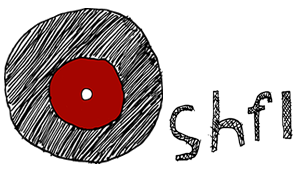When industrial music took shape in the late 1970s, its aesthetic significance was quickly overshadowed by the sensationalising of its transgressive qualities, both by the media and by artists and fans themselves. The pre-history of industrial music pioneers Throbbing Gristle as, variously, founders and members of performance art collective COUM Transmissions, who achieved notoriety throughout Britain for their Prostitution exhibition of 1976, gave the artists and the music they made an added subversive edge, a frisson of extremity.
Nevermind that COUM were working clearly within a lineage of radical and critical performance and film that included predecessors like the bloodletting, ritualistic Viennese Aktionists and the queered intensities of film makers like Kenneth Anger and Jack Smith. To the moral arbiters of media and government, COUM were, in the words of conservative MP Nicholas Fairbairn, the “wreckers of civilisation.” When they crossed over into music, Throbbing Gristle approached the art form with a similarly confrontational, questioning stance.
But perhaps their most significant interventions were in the approach they took to DIY art practice and documentation. Starting their own record label, Industrial Records, they released albums, singles, tape box sets of live recordings, and records by fellow travellers. This community would mutate as Throbbing Gristle fractured, and splinter off into several cliques. Nowadays, Throbbing Gristle and COUM Transmissions are canonical; key member Cosey Fanni Tutti is a well-respected author; and industrial as a genre is thoroughly incorporated into rock and pop’s body politic.
But another thread that unspooled from the liberations and refusals that industrial music offered to disaffected artists within Britain was the development of a particular strain of music that developed out of industrial and into ‘noise’ – and then far beyond. For want of a catchier genre name, the British Post-Industrial Underground captures the history of the thing, but we’d do well to remember that many of the artists involved have wandered far beyond industrial music as a genre.
Unshackled by many shifts that occurred in the late 1970s – punk’s politics; industrial’s critical-aesthetic interventions; noise music as a valid form of socio-cultural expression; regional networks of fanzine and cassette traders, self-releasing their own material – acts like The New Blockaders, whose Changez Les Blockeurs is this underground’s founding document, were sketching out a new approach to noise and experimental music. It helped that Changez Les Blockeurs felt like a major shift away from the socio-critical signification of groups like Throbbing Gristle, and the paranoiac surveillance-culture interests of Cabaret Voltaire, to more ambiguous terrain.
From there – and considering connected outfits like Bladder Flask, Metgumbnerbone, and Masstihadshu – a web of like-minded souls was slowly spun. There are connections to the bleak noise antics of legendary labels like Broken Flag and the fiercely reduced compositions of groups like Whitehouse, but one thing that has become evident over time is both the sly humour of releases like Mixed Band Philanthropist’s The Impossible Humane, that connects more with the surrealism of fellow travellers Nurse With Wound, and an embrace of environmental sound (whether urban, suburban, regional, or rural).
The creative development of someone like Andrew Chalk is illuminating. His first albums from the mid-eighties, under the name Ferial Confine, were tonally dense noisescapes, abrasive and thick with tone, but still carefully constructed. But by the late 1990s, he was focused more on internal landscapes, embracing the suggestive and sonorous possibilities of drones and field recording. More recent material has played with micro-melodies and a kind of ‘quiet lushness’ to create deeply personal compositions.
Over time, one can observe a shift in those involved, focusing on a new and loosely aligned collective of musicians – names like Darren Tate, Paul Bradley, and Jonathan Coleclough, all of whom have worked with, or alongside, figures like Chalk and Colin Potter (the latter has a rich history that stretches back to the late 1970s, and has been a frequent collaborator with Nurse With Wound). There are other names here, too, whose music suggests a loosely homologous fit – Michael Prime and Morphogenesis; Philip Sanderson of Storm Bugs; and so on. But the key to this music? A quiet questing, a sense of place, and a desire to explore both subtleties and intensities.




















